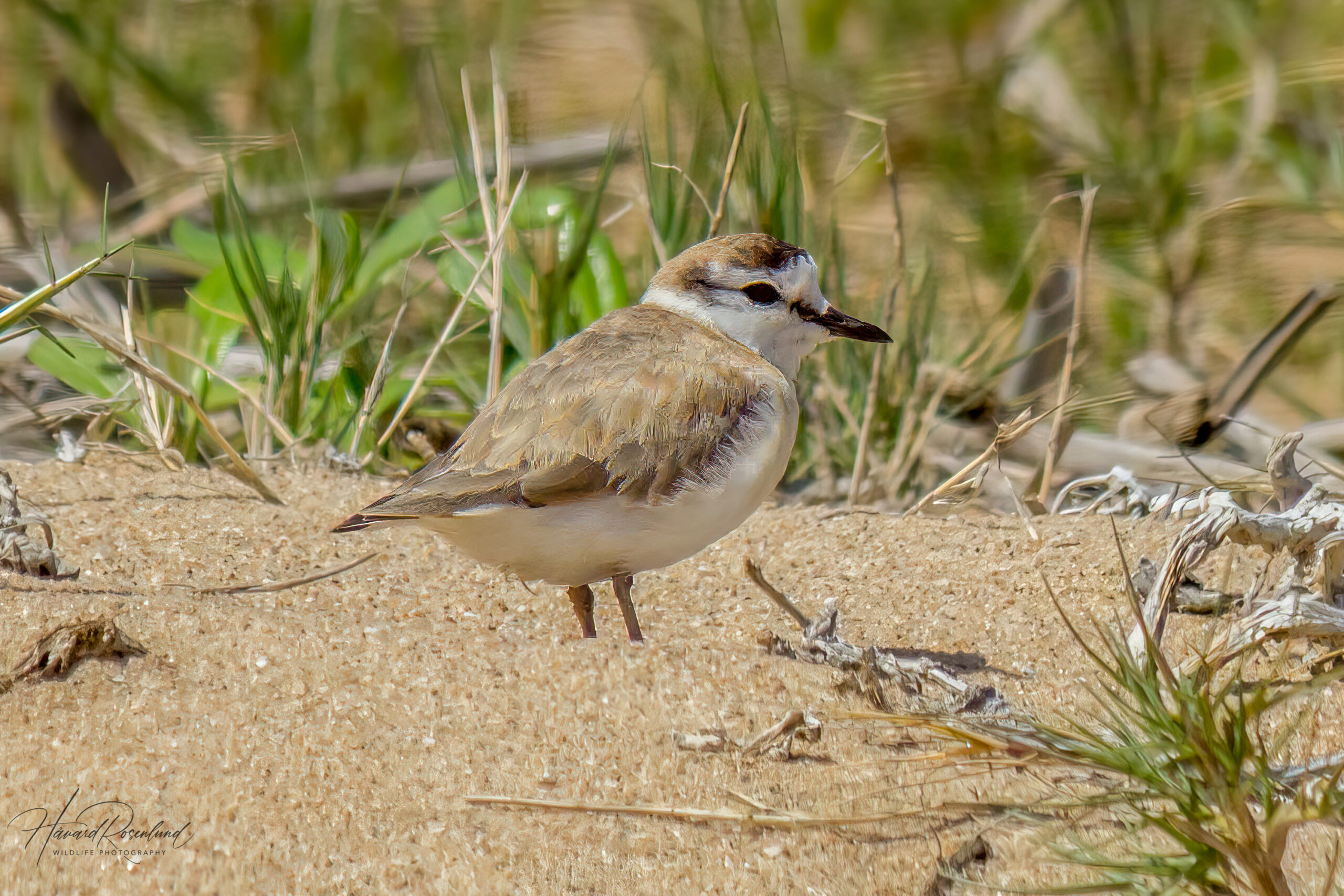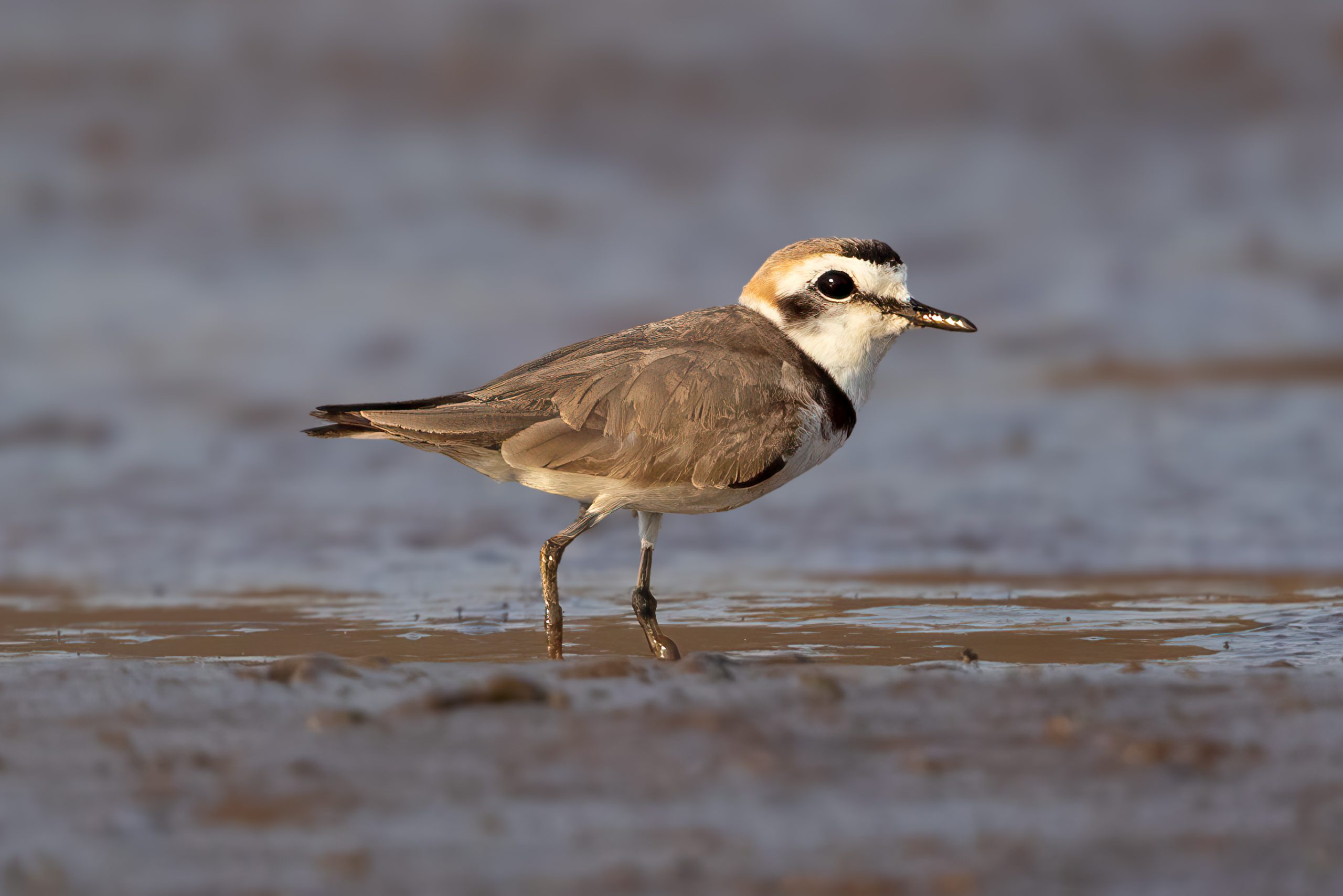Description
The white-fronted plover (Anarhynchus marginatus) is a small shorebird found across sub-Saharan Africa and Madagascar. It is 18 cm long and weighs 42-55 grams. Adult males showcase a striking white forecrown, contrasted by a dark mid-crown band, with their sandy grey crowns resembling the coastal landscapes they inhabit. Females and juveniles share a similar plumage, though females’ crown bands are less pronounced. This species is distinguished from the similar Kentish plover (Anarhynchus alexandrinus) through its unique forecrown and facial band patterns.
Diet & habitat
Adapted to a diet rich in small invertebrates, the white-fronted plover thrives on a varied menu of sand flies, grasshoppers, crustaceans, and worms. Its preferred habitats include sandy beaches, mudflats, and riverbanks, where it employs a characteristic ‘run-stop-search’ foraging technique. Unique to this species is the intriguing ‘foot-trembling’ method, used to unearth hidden prey.
Nesting
Breeding seasons of the white-fronted plover vary, with year-round nesting along the coast and specific seasonal patterns inland. Pairs create unassuming nests, which are shallow scrapes in sand, gravel, or shingle, occasionally lined with shell fragments, pebbles, seaweed, or twigs. Typically located more than 70 m above the high water mark. Both sexes incubate the eggs, which are covered with sand during the day in response to threats, for a bout 26-33 days. Post-hatching, the chicks, quick to fend for themselves, still benefit from parental guidance to bountiful foraging areas. They fledge after 28-38 days.
Status
The global population of white-fronted plover has been estimated at 73,500–103,500 individuals (2009). The population is decreasing at a non-threatening rate. Main threats are habitat loss due to wetland degradation or destruction, river morphology changes due to dam constructions, and disturbance from tourists and off-road vehicles. Due to its large range and population size it is listed as least concern on the IUCN Red List.





